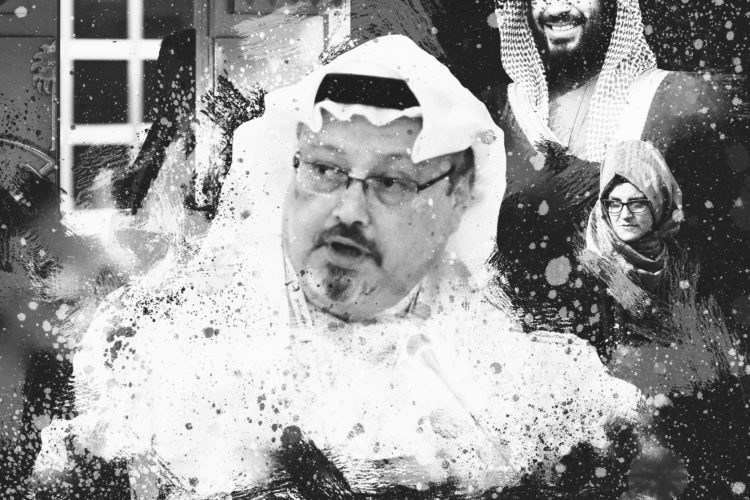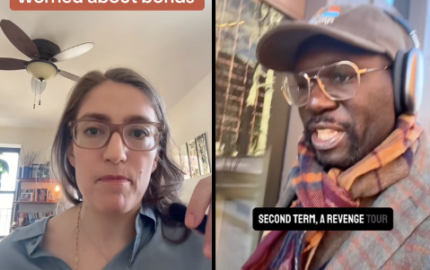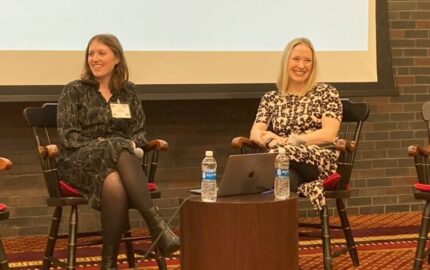Before humans learned to write, they documented their lives through images with technologies fashioned from materials at hand. To create the renowned galleries of animals — objects of fascination, dreams of conquest — in the Lascaux Cave, painted in southwestern France 17,000 years ago, artists used minerals dug from the dirt to create a palette of earth tones, etched the rock with stone tools, and even invented airbrushed pigment through reeds or hollowed bones.
In our age of cyber-surveillance and social media, a new breed of storytellers wield a modern palette, culled from technologies that document and, many complain, intrude on our daily existence, to weave narratives that investigate wrongdoing and dissect staggering tragedies of our time, second by second, frame by frame, pixel by pixel.
At The New York Times, a pioneering band of investigative journalists probes horrific events to discover hard and — for oppressive regimes and ill-trained police agencies — unwelcome truths.
Last January in The New Yorker, Harvard historian and author Jill Lepore gave a bleak answer to the question “Does Journalism Have a Future?” She described the field as “addled as an addict, gaunt, wasted, and twitchy, its pockets as empty as its nights are sleepless.” But Lepore did manage to detect a few bright lights. Among them, she wrote, “no shortage of amazing journalists at work, clear-eyed and courageous, broad-minded and brilliant, and no end of fascinating innovation in matters of form, especially in visual storytelling.”
While Lepore didn’t cite examples, she might well have pegged the Times’ “Visual Investigations” feature. Since 2017, the paper has produced an impressive series of powerful storytelling based on an array of visual evidence, most of it trawled from open-source information. Whether it’s CCTV, satellite or drone footage, videos from Facebook, YouTube or police body cams, or photos and video fragments from eyewitness smartphones, there’s a wealth of visual and audio evidence for reporters to cull, analyze and compile into extraordinary investigative and explanatory visual journalism. These so-called data points — often grainy black-and-white images — are then painstakingly studied and connected using “video forensics,” a relatively new form of investigative reporting developed in recent years by human and civil rights groups, chiefly in Europe.
This microscopic attention to that bounty, bolstered with traditional reporting, coupled with cutaway graphics, mapping and motion video, and underscored by deft narrative and soundtracks, has enabled the Times’ Visual Investigations Team to produce a stunning gallery that embodies the unit’s mission statement: “Today, the news is almost always caught on camera. We break down every decibel, pixel and frame to reconstruct the events you've heard about — and to expose the truth.”
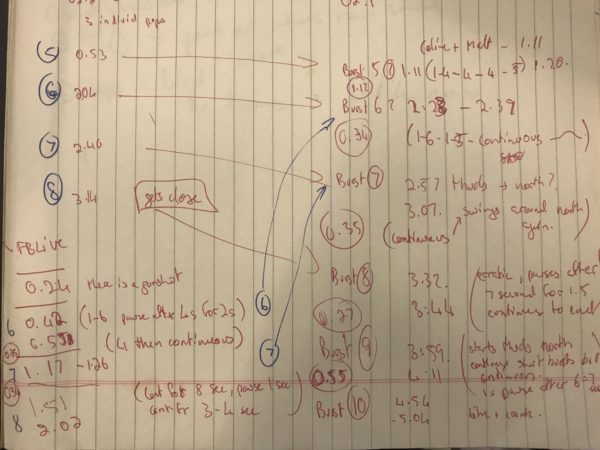
Among them:
- The New York Times Visual Investigations team built a timeline of the shots fired by Stephen Paddock at the Las Vegas concert in 2017.
Showing how Stephen Paddock planned and carried out the worst mass shooting in modern American history at a 2017 outdoors concert in Las Vegas, killing 58 people and wounding more than 700 others before turning a gun on himself. The Times’ team made its case by stitching together seven days of hotel and concert footage, maps and graphics of Paddock’s hotel rooms, and video showing the terrror and carnage below. - Deconstructing the 23-second sequence when two Sacramento police officers decided to fire 20 bullets at unarmed Stephon Clark, a vandalism suspect, hitting him six times in the side and back, killing him in his backyard on March 18, 2018.
- Using 3-D modeling to determine whether Syria and Russia told the truth in 2017 when they denied responsibility for a deadly sarin gas attack on a Syrian village. (They didn’t, the Times found.)
- Demonstrating how a bullet fired by an Israeli soldier killed Rouzan al-Najjar, a 20-year-old Palestinian woman working as a volunteer medic during Israel-Gaza border protests in 2018.
Traditional newswriting strategies
Visual investigators are motivated, says Malachy Browne, the award-winning team’s senior story producer, by a desire to expose wrongdoing and disrupt false official narratives through accountability journalism. “To expose disinformation. Solve problems,” is how Browne described his role to me. “You know, stick it to the man if there’s somebody to stick it to.”
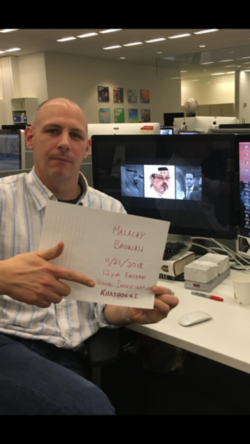
“There is an incredible amount of documentary evidence hiding in plain sight,” Browne told a Reddit forum in November. “When you gather and analyze it, you can answer key journalistic questions like when and where did an event happen, who was involved, what happened and how. In an era of contentious ‘he said-she said’ narratives, that evidence is valuable in supporting one side of a story, or explaining to our readers in a transparent way how an event happened.” Browne, an Irish native, is a former computer programmer with years of experience in social media reporting on global issues for Storyful and other online news agencies that use information culled from social media to enhance traditional reporting.
Using traditional newswriting strategies, he and his colleagues alternate their visual tool chest with complementary voice-overs. The result: stories based on a collection of air-tight evidence that hold the powerful accountable and, frequently, prompt change.
With no precedent for this particular type of investigative journalism, its makers rely, Browne told me, on time-honored traditions of print journalism to craft their narratives. These include headlines and thumbnails to draw in readers, tick-tock chronologies, and nut grafs, where, he explains, “you tell the reader what you're buying into if you stay with us with the story.” Kickers present the solution to the problem posed at the story’s beginning. And like print reporters, visual investigators juggle the competing demands of the nut graf, how much to give away, how much to tease. “We try to find a balance,” Browne said.
Creating “Killing Khashoggi”
I was drawn to the Times work by a story published online in November, 2018: “Killing Khashoggi: How a Brutal Saudi Hit Job Unfolded.”
With chilling precision, it reconstructs the movements of a Saudi hit team accused of killing and dismembering the Saudi dissident and journalist Jamal Khashoggi in the country’s consulate in Istanbul, Turkey, last October. Videos of an autopsy expert, a lookalike and a black van are the key ingredients, along with a visualization of time that relies on the calendar and the clock to track the weeks, days and hours leading up to the gruesome murder and its aftermath of outrage and lies.
From its opening seconds — a montage of faces and a steely voice-over: “There were 15 of them. Most arrived in the dead of night, laid their trap and waited for their target to arrive.” — the video unfolds like a mystery. It is told as a whodunit of suspense, treachery, murder and a grisly cover-up that unfolds in just 8 minutes, 33 seconds. It reveals a homicide with global implications as it makes a convincing case that the villain behind the crime may well be Mohammed bin Salman bin Abdulaziz Al Saud, the Crown Prince of Saudi Arabia, who sought vengeance against the prominent dissident. (The Saudi government has maintained that neither bin Salman nor his father, King Salman, knew of the operation to target Khashoggi. President Trump has supported the Saudi stance.)
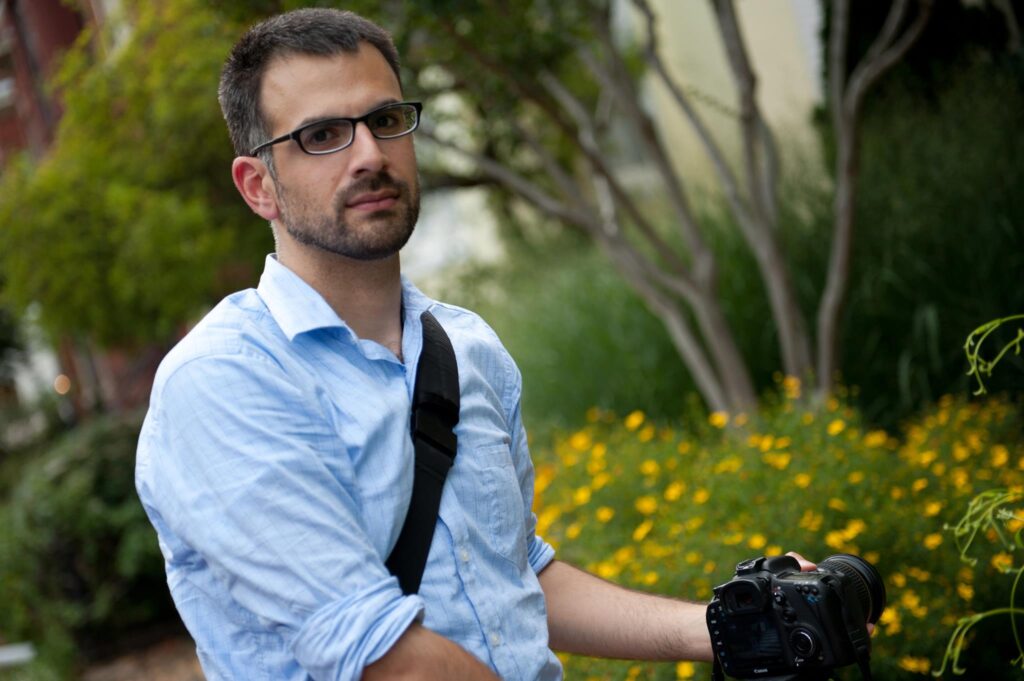
To create “Killing Khashoggi,” more than a dozen Times reporters, producers, researchers and visual journalists employed a battery of data points to make the case against the Saudi killers, and, by implication, the Crown Prince, that they extracted from CCTV and news footage, and by tunnelling into the social media universe to identify the perpetrators. Video fragments, which are the form’s version of a broadcast audio soundbite, graphics and maps, are juxtaposed with a 1,250-word staccato narrative by Browne and his colleague, David Botti, that tracks two journeys: Khashoggi’s prosaic effort to obtain documents at the Saudi consulate needed to marry his fiancé, and the sinister movements of the Saudi hit team in what the Times demonstrates was a botched effort to cover up the crime.
What makes the “Killing Khashoggi” and other Visual Investigations such riveting journalism isn’t so much the visual storytelling (of which one could argue there are more artistic examples) as it is the wide-ranging, innovative, meticulous reporting, state-of-the-art visual strategies, and the tight, elliptical writing that distills complex evidence. Like the finest narrative writers, Browne and his colleagues rely on short sentences and scenes. They seek out and highlight vivid, burden-of-proof details, whether the closeups of the badge worn by a murderous Nigerian army unit or the sneakers the Khashoggi lookalike forgot to change when he swapped clothes with the doomed man.
A natural evolution
As a former newspaper reporter with an investigative reporting background, I wanted to understand this new journalistic form by focusing on “Killing Khashoggi” and studying the unit’s other stories. To grasp how they tap into the products of ever-present surveillance and social media to craft these narratives with words and imagery, I reached out by email to Browne, who discussed the role played by numerous Times’ colleagues and outside experts, and brought Botti into the conversation to discuss writing issues. I followed up with additional questions during a phone call with Browne.
In exacting detail, Browne and Botti schooled me on how the team — aided by local eyewitnesses, social media mavens and 3D modeling virtuosos, as well as academics and scientists — produced their stories and the storytelling strategies and structures they employed. Browne also described the emotional toll that watching violent videos can take and provides a wealth of resources for writers who want to learn more.
The teams’ stories have already prompted responses from those implicated in the reports. The first installment of the “Killing Khashoggi” reporting was a print story that shifted focus onto the Crown Prince and his agents just as President Trump appeared to embrace the false Saudi narrative that a rogue agent was responsible for the journalist’s death. The findings of the investigation into the chemical weapons attack in the Syrian town of Douma was supported in a forensic report later published by United Nations’ investigators. The Gaza story prompted the Israeli Defense Force to fully accept responsibility for killing Rouzan al-Najjar, while the Nigerian government launched an investigation after the Times showed that an elite group of soldiers fired indiscriminately into a crowd of protesters, killing dozens.
Browne led the Douma and Las Vegas mass shooting investigations (the latter won an Emmy Award) and an investigation, among many others, including one that identified Turkish security guards who assaulted protesters a mile from the White House. Last month, “Killing Khashoggi” was named video of the year and best news feature by the Society of Publication Designers. Brown and Botti were among a team of 16 Times’ journalists which won the Robert F. Kennedy Human Rights Award in international journalism for its coverage of the war in Yemen.
“For me,” Browne said, “visual investigations are a natural evolution of that kind of work: scouring the open web for clues, analyzing visual content, using free tools to solve problems and organizing factoids into buckets. And combining this with traditional reporting and common sense.”
Our conversations have been edited for length and clarity. The Q&A is followed by a list of Browne's recommended sites and resources.

Could you start by describing the process by which “Killing Khashoggi” was conceived and executed? How long did it take?
MALACHY BROWNE: We started reporting in New York at around 7 p.m. one evening, as soon as Turkish media published the names and blurry photographs of 15 suspects. We published in a variety of formats — print stories, a graphics reconstruction, and finally, the video that combined all the clues we unearthed. The print stories began within a day; the video investigation took us around a month.
Initially we whipped up a shared document to establish who these men were, their positions and affiliations to Saudi government agencies, and their links, if any, to Crown Prince Mohammed bin Salman. We also began to map out the suspects’ movements using flight records, security footage, the location of the consulate, and the hotels where they stayed. And much more.
As the credits roll, 18 other names appear. What are the disciplines they represent and the roles they played in creating the story?
BROWNE: The reporting encompassed a broad swath of the newsroom.
David Kirkpatrick, Ben Hubbard, Hwaida Saad and Carlotta Gall in Beirut and Istanbul were integral to the reporting. They searched across Arabic media, worked sources close to the respective investigations being conducted in Turkey and Saudi Arabia, and collected a daily dossier of information published by Turkish media. Christiaan Triebert and I started to collect information from social media and the open web about the suspects, their movements and activity at the consulate. We also vetted information with members of the Saudi Twittersphere who were doing the same.
For example, we found an email address linked to social media accounts used by the autopsy expert, Salah al-Tubaigy. From this we found academic papers he had written, conferences he attended, state committees he sat on, news articles, a forensic pathologist fellowship he undertook in Australia, and other biographical confirming that he held a senior government position.
Anjali Singhvi, a graphics editor and former architect, tracked down footage taken inside the consulate and interviewed the photographers to model the building’s interior to annotate what David Kirkpatrick had gleaned about where Mr. Khashoggi was taken. In Brussels, Stephen Erlanger confirmed through diplomatic sources that one of the key suspects, Maher Mutreb, was once a Saudi diplomatic attaché in the United Kingdom. David Botti and Barbara Marcolini found archive photographs of Mr. Mutreb, identifying him as a top aide to the crown prince during several visits overseas.
In France, Alissa Rubin found sources who had worked with the royal family and could identify another suspect. In Washington, Adam Goldman pressed his national security sources, who confirmed some of the leads we had gathered. And national reporters in Seattle, Silicon Valley, Houston, Boston and New York were all trying to work their sources to find out what we could about the suspects who traveled with the crown prince on his global and U.S. tour.
What technological developments make a story like “Killing Khashoggi” possible?
BROWNE: The ability to track planes using their tail number, to geo-locate them on a runway by comparing airport security footage with satellite images. The abundance of stills and footage taken inside the airport terminals allowed us to confirm where the suspects passed through passport control. A smartphone application popular in Saudi Arabia allowed us to corroborate phone numbers we received for some of the suspects, including the positions they held in Saudi government agencies. We tried facial recognition software on some of the suspects, but the results were inconclusive; our own comparisons of distinctive facial features proved more fruitful.
How do visual storytellers use evidence like GPS coordinates, body camera video, facial recognition and forensic mapping to construct a narrative? How different is what they do from the way that narrative writers use their reporting materials, structure and language? What can they do that print dogs can't, and vice versa?
BROWNE: Nowadays, there’s an abundance of audio-visual evidence available to us as investigators — a cell phone video, an Instagram post, a satellite image, maps, Google Street View, police scanner audio, a LinkedIn profile. Visual Investigations rely on parsing and analyzing this kind of information to connect dots and answer basic journalistic questions.
So, a print reporter may quote witnesses or unverified social media reports that say a chemical attack in Syria occurred at around 8 p.m. on a Saturday evening. The Syrian regime may forcefully challenge that story, and the truth becomes muddied by opposing narratives. But a forensic analysis of video evidence can prove when, where and how that attack happened, and expose the government’s deceit in a transparent way.
A print reporter can write about those conclusions, but essentially there’s a difference between reading and seeing the visual evidence. In our stories, we use graphics, annotations, script, and careful narrative structure to distill complex evidence into a story that’s explanatory and easy to follow.
What storytelling models do visual storytellers draw on? Do visual investigations attempt to follow the classic narrative arc of exposition, rising action, climax, falling action and resolution?
DAVID BOTTI: It really depends on the story. Our videos tend to the more analytical, so typical narrative arcs found in features or literature don’t always seem appropriate. That being said, we often start with a question, and hopefully by the end we resolve that question. For the most part we tell stories along chronological lines, or in a structure that builds revelations through the evidence. This seems the best method for laying out a complex investigation and keeping it easy to follow.
How and why did you use the calendar and clock — 4 DAYS BEFOREKHASHOGGI DISAPPEARS, 12 HOURS BEFORE KHASHOGGI DISAPPEARS, 9 DAYS AFTERKHASHOGGI DISAPPEARS — to serve as lines of demarcation that seem to be the story’s architecture?
BOTTI: There are so many names, places and timeframes in the story that we didn’t want the viewer to start getting confused. The most crucial and memorable moment of the story is Khashoggi’s disappearance. So we hoped that orienting the structure around this moment would help people keep track of where they were in the saga.
How do you separate, or think differently, about visual storytelling vs visual reporting?
BROWNE: Visual reporting is many things, but for our purposes, it’s analyzing visual evidence to reveal new insights. It can involve audio analysis, or creating 3-D reconstructions to help our team understand the details or nuances of a particular situation. It can also be the use of maps and data over time to illustrate a phenomenon.
Visual storytelling is using that information to help our audience understand a complex story, reconstruct an event, immerse viewers in an experience, or transparently prove or disprove a point.
The narration, by my count, is 1,250 words? How do you write narration, and what governs the way you juxtapose the words with the imagery?
BROWNE: David and I wrote a few initial versions of the Khashoggi script and tweaked it as the story evolved over time with our editor, Mark Scheffler, to cull extraneous reporting and to keep it tightly focused on the most salient points. Most of our visual investigations open with a nut graf recapping the story and explaining what you, the viewer, are buying into. We write very much to the imagery and the graphics to make it as explanatory as possible. Often we want to transparently present the reporting we’ve done so that viewers clearly understand how we reach conclusions. We include on-the-ground reporting for some stories.
Conventional wisdom has it that people won’t watch a video that’s more than 90 seconds. Yet The Times routinely blasts past that threshold. How long, in your experiences, will audiences watch?
BOTTI: It’s true that for a time we (in the digital video community) believed shorter was better. This was in the era of things like text-on-video Facebook videos. But greater lengths seem to be less of a concern now, thanks in part to YouTube, where long videos are favored by the site’s viewers (and algorithms). And on The Times’ website, we’ve found our audience is more open to sitting back and watching. The Times routinely publishes 10 minute-ish videos when the story warrants it and we are seeing very high retention rates. Pacing, robust original reporting, and tight storytelling seem to be the key ingredients.
Besides technological innovations, what led to the shift from traditional imagery — photos and graphics — that illustrate stories to stand-alone video projects like the Times’ Visual Investigations?
BOTTI: Publishers started to focus on video for a variety of reasons, from advertising revenue to keeping up with social media trends. We also believe that video is a powerful way to tell stories and is a medium that should be leveraged in our report for that reason. In the Visual Investigations line of work, the shift probably came with the ability for virtually anyone, anywhere to film video and take photographs. There’s a tremendous wealth of imagery capturing newsworthy events from all perspectives. That’s fertile ground for digging. Also, improvements in the satellite industry mean more and more people have easier access to satellite images. That means more eyeballs poking around —more information sharing.
What do you think gives “Killing Khashoggi” and other Visual Investigations such narrative power?
BOTTI: Just by virtue of the stories we cover, they tend to feature subjects with great amounts of tension and high stakes. So there’s an inherent narrative power already built in. But that’s just a small part. We pose a question or set up a problem at the beginning of all our videos, telling the viewer we’ll take them along in the process of diving deeper. We’ll present them with images and show them the importance of things hiding in plain sight (like the shoes worn by Khashoggi’s body double, or the insignia worn by an army battalion). All of this serves to keep surprising viewers and hopefully keep them watching.
Finally, many of our stories try to speak truth to power — debunking official lines and coverups. These are the kinds of stories that really seem to resonate with audiences.
What lessons can narrative writers learn from this new breed of storyteller?
BOTTI: Right up front, tell viewers exactly what they’re going to get out of watching your video — and why they should care. Involve them in the reporters’ process of discovery, letting the story unfold revelation by revelation. Don’t be afraid to state and restate the obvious as you go — it’s important to make sure your viewer doesn’t get lost.
But perhaps the key lesson lies in what happens before you even start writing: story selection. Make sure it can have an impact, good visuals and the opportunity to bring new insights to the table.
When the Stephon Clark story opens, the narrator says, “Warning: It can be hard to watch.” This is true of so many of Visual Investigations. How hard emotionally is it to carry out them out?
BROWNE: It can be quite difficult at times. When we rebuilt the apartment block in Douma (the site of the sarin gas attack), what we had were 5- to 6- to 7-second clips. It was heartwrenching to go through those awful videos repeatedly. It’s not like it’s experiencing it firsthand, but vicarious trauma has been studied. You look for warning signs as a large team and check yourself.
But seeing seeing innocent people killed or lives destroyed by this type of violence motivates you as well to solve the problem and tell the story.
Your colleague Adam Ellick recently predicted for Nieman Lab that video forensic reporting will move mainstream and local as “the toolkit of social intelligence and listening devices” becomes increasingly “accessible for DIY video makers, lean local news department and international organizations in countries where press freedoms don’t exist.” What advice would you give this new generation, especially as they use these tools to tell compelling narratives with a small team and a shoestring budget?
BROWNE: Open source skills are developed through practice and repetition. Learn from the OSINT community on Twitter. Research the tools you need to use from Bellingcat’s toolkit, and the tipsheets shared by GIJC (Global Investigative Journalism Conference). Set up a digital workstation of tools and links using start.me or a Google Chrome profile. Absorb what open-source verification means from the VerificationHandbook.com or the case studies on FirstDraftNews.org. Test yourself daily. Learn and adapt storytelling techniques from journalists you admire.
Malachy Browne's recommendations for sites to watch, tools to use, and sources to learn from
We follow the work of several groups in architectural, human rights and investigative reporting who apply these practices, and we occasionally collaborate with some of them. The London-based agency Forensic Architecture and Brooklyn-based SITU Research have brought forensic reconstructions of time and space to a new level.
Around the same time we were doing investigations in Storyful, the British reporter Eliot Higgins was building the early stages of what would later become Bellingcat, a collective of open-source investigators who almost exclusively apply these techniques. In 2018, Bellingcat named the Russian GRU agents suspected of poisoning Sergei Skripal in Salisbury, U.K., and they also did reporting that informed our Syria investigations. They do terrific work and are now moving into the justice and accountability realm.
Amnesty International and Human Rights Watch also apply these methods and have especially advanced the use of satellite imagery in investigations.
Some of the most powerful accountability work is often done when groups collaborate, e.g. Bellingcat, HRW and Forensic Architecture’s reconstruction of the U.S. bombing of Al-Jinnah Mosque in 2017. And Amnesty sometimes works with a group of investigators led by Alexa Koenig at the Berkeley Human Rights Center to document human rights abuses. BBC Africa Eye is also adapting these practices and working with the open-source community.
ProPublica has taken an interest too, launching a similar visual investigations unit.
Our own team comprises former members of Storyful, Amnesty, Bellingcat and, soon, Berkeley’s Human Rights Center.
In terms of visual storytelling, it’s hard to make comparisons between our brand of work and others. And because I'm far from a video purist, I feel slightly unqualified to cite influences. However, the 2015 video reconstruction of Farkhunda's unseemly killing in Afghanistan by John Woo and Adam Ellick is a forerunner of this kind of work, so I absorbed and learned from that. Journalistically I've long admired the reporting of the Channel 4 News team in the U.K., including their documentaries on Syria using eyewitness footage.
Other strong examples of this material being used in documentary form are Sebastian Junger's Hell on Earth (2017), The Square by Jehane Noujaim (2013), and Karama Has No Walls by Sara Ishaq (2012).
Our pieces tend to have a distinct feel, so I'm quite reliant on the creative talent working with me: David Botti, Natalie Reneau, Drew Jordan, Anjali Singvi, Mark Scheffler and Nancy Gauss among others. I've also learned from Jonah Kessel, one of The Times's most creative video storytellers.
